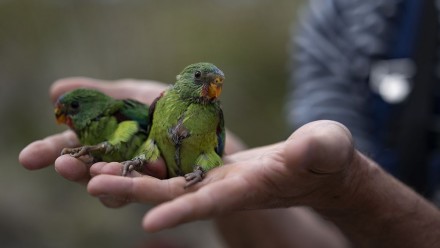Rural households' decision-making and livelihood trajectories in the Northern Lao crop boom
PhD Mid Term Review
The rural households who comprise three-quarters of Laos’ population are moving from subsistence- to market-oriented crops, encouraged by both national policies to commercialise agriculture and Laos’ proximity to major Asian markets.
Soytavanh’s PhD project examines rural households’ decision-making and livelihood trajectories for three boom crops in Northern Laos - teak, cassava and bananas. Her qualitative research draws on fieldwork in six case study villages in three provinces - Luang Prabang (teak), Sayabouly (cassava) and Oudomxay (bananas) to explore three main questions: a) What are the relevant policy, market and value chain contexts? b) How and why do rural households decide to participate in boom crops? and c) What are the consequences of participation for household livelihoods?
In her mid-term review seminar, Soytavanh focuses on the banana case study. Households typically participate in banana growing by leasing their land to Chinese investors for a contracted period; they may or may not also provide management or day labour. Results reveal that the banana boom in northern Laos has been driven by factors both external and internal to households. Key amongst the former are government economic, environmental and land reform policies and high market demand for bananas in neighbouring countries; amongst the latter are farmers’ desires for low labour-input income and their willingness to follow the example of other adopters to whom they feel connected. Household participation could be summarised in a typology of five categories. Not all households have the capacity or willingness to participate in the banana boom, and so household livelihood trajectories in the case study communities show emerging patterns of social and economic differentiation. These findings illustrate the complex interaction of external and internal factors that influence farmer decisions about participation in contracted boom crops, and the significance of policy settings and interventions in boom crop dynamics.










